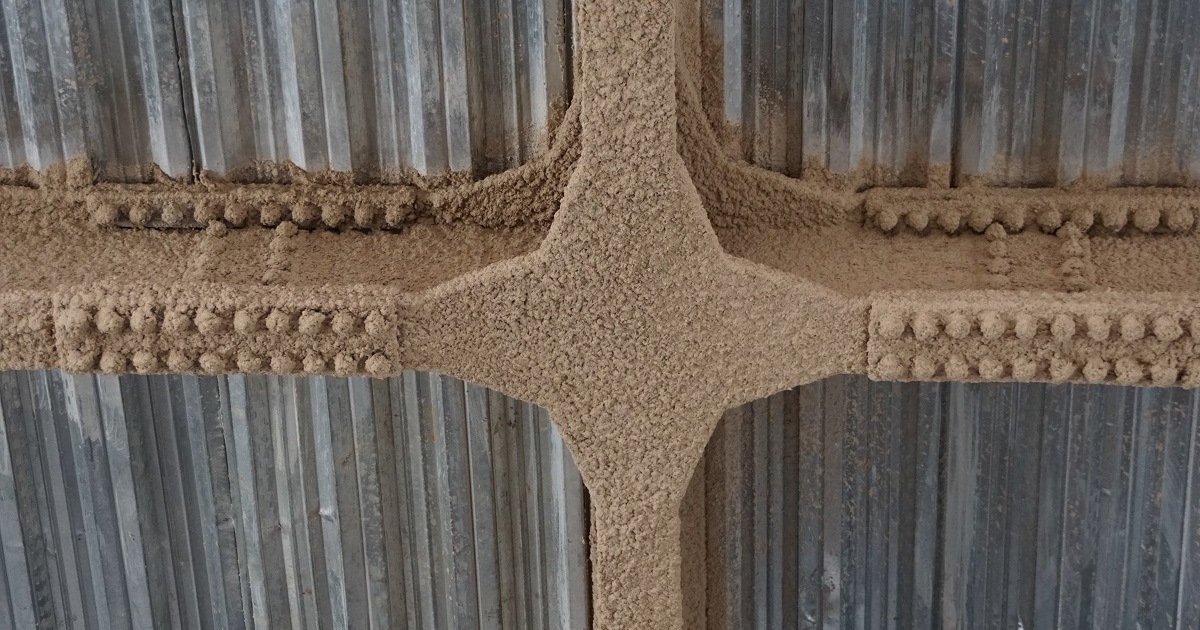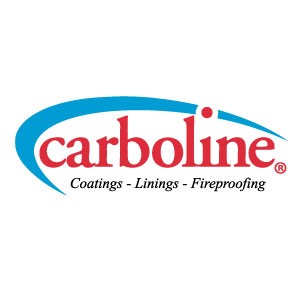
In part one of this article series, we explored the basics of passive fire protection—from what it is and why it's essential to the common fire test standards and other considerations when working with fireproofing materials.
As we build on this foundation, it's important to understand the two most common types of fireproofing used for protecting steel structures. This article will focus on spray-applied fire resistive materials—or, more specifically, cementitious fireproofing.
What is cementitious fireproofing?
A common type of passive fire protection, spray-applied fire resistive materials (SFRMs) are applied directly to steel structures to thermally insulate them against the high temperatures of a fire. SFRMs, like cementitious fireproofing, primarily consist of a gypsum or Portland cement binder. This is because the cement and gypsum will harden as they cure.
However, spray-applied fireproofing systems often contain other materials such as mineral wool, quartz, perlite, or vermiculite to help lighten the solution or to add air as an insulator. In addition, chemical hardeners can also be used to either speed up the hardening process or to increase the hardness of the final fireproofing material.
Cementitious fireproofing is typically supplied as a dry powder in a bag, which is then mixed with water onsite prior to spray application in the field.
Design and specification considerations
An important variable to consider when spray-applying cementitious fireproofing material is its dried density as measured to the ASTM E605 standard. Designs will prescribe a minimum density level that the applied product must achieve.
This density depends on a variety of factors, such as the selected material, how much water is used to mix, the spray pressure, and even the water temperature. In addition, adhesion and thickness are other common minimum requirements for this type of protection.
Lower density means that a bag of cementitious fireproofing will cover more area and thus reduce the total material cost. However, targeting the minimum required density could fail to meet design requirements and result in the removal/replacement of underweight areas.
This is costly and can cause severe delays in the project schedule. A balanced target near the minimum density can minimize risk to the applicator while still resulting in an economical outcome, balancing material usage and reducing the risk of a failed inspection.
On the other hand, higher density can mean better physical properties such as impact resistance or hardness. That said, it can also indicate higher adhesion values. Building codes require stronger adhesion as a building gets taller, which can change the selected material or how much water needs to be used.
Another common practice is to inject aluminum sulfate (alum) into the mixed material between the mixer and the sprayer to decrease the material set time and reduce the dried density.
Best practices for the application process
Faster application and a lower density/better coverage rate ultimately lead to a more economical installation when it comes to spray-applied fireproofing materials. When all these factors are known, the dry density can be calculated from the wet as installed density. Cementitious fireproofing manufacturers can supply wet-to-dry density tables for reference.
Designs for spray-applied fireproofing materials can call for the application of material to beams, decks, slabs, columns, precast units, or joists. These designs may provide a formula for calculating the required thickness based on metrics like the W/D, Hp/A, or A/P of the piece of steel in question. This tailors the fireproofing protection to the specific steel size in order to ensure the desired duration without excessive thickness.
SFRMs are commonly installed at thicknesses ranging from 3/8" to 3" (10 to 76 mm), depending on various factors. Thickness measurements for SFRMs differ from those used for corrosion-protective coatings or linings.
The design and specification govern the requirements for spot measurements and average thickness. Industry standards like the AWCI 12-A manual are commonly used for spray-applied fire resistive materials and lay out the location and frequency of measurements for inspection.
Although SFRMs are typically the least expensive option, their sprayed texture and non-uniform appearance mean they are usually used behind walls and above ceilings to be kept out of view.
SFRMs don't provide a solid base to paint if a particular color is desired and can also be a mess to install. For instance, overspray and the water used to mix the material can interfere with other trades. After all, cementitious fireproofing is colloquially called “mud” for a reason.
Cost considerations for cementitious fireproofing
Since the required thickness for a passive fire protection system can be a function of steel size and shape, it is sometimes possible to reduce the total cost by increasing steel size. Because of the reduced fireproofing material and labor, this offsets the additional cost of the larger steel.
Although primer application and steel selection may occur well before any fireproofing is applied, earlier involvement of qualified fireproofing applicators and manufacturers can make a big difference in reducing the total project cost.
In part three of this article series, we will explore the other common type of fireproofing used for protecting steel structures: intumescent fire resistive materials (IFRMs). Our discussion will cover design and application best practices for intumescent paints, as well as cost considerations and inspection standards specific to this fireproofing material.

